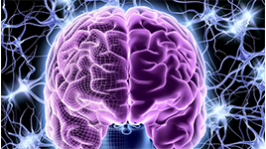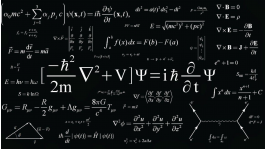According to S.Grof’s theory of perinatal matrices [1], in addition to the traditional biographic stage in the development of the human psyche, there is a perinatal (prebiographic) stage, which consists of four basic perinatal matrices (BPMs), accumulating human experiences and feelings at the relevant stages of the human fetus’ biological development [2].
The first matrix, which is formed at the stage of the fetus’s embryonic maturation, corresponds to the symbiotic unity of the fetus and the mother organism; the second, to the stage of contractions, when the fetus is compressed by the uterine walls; the third, to the fetus’s movement through the birth canal; and the fourth matrix is directly related to the moment when a human being sees the light of day and is formed when the fetus transfers from the aquatic environment to air. Each perinatal level has its set of emotions and feelings, which enrich the human consciousness. Afterwards, according to Grof, these matrices are imposed on the characteristics of the biographical stage of human life, contributing to the origin of many psychic diseases and psychopathological deviations [1, 2].
The biographical stage, in turn, represents the gradual development of human consciousness, which is multicircuit (multilevel). When a human masters the next circuit, it represents an evolutionary turn in human development. The well–known American scientists T. Leary and R. Wilson presented the theory of consciousness levels most consistently [3–5]. They single out the hominid (human) and posthominid (superhuman) layers of the psyche, each consisting of four circuits and corresponding to consciousness and superconsciousness (supraconsciousness).
The hominid layer comprises the following circuits: biosurvival, oriented toward human search for a zone of security and comfort (resulting in a dependent or independent personality); emotional–territorial, oriented toward determining the group role of an individual (dominating or dominated); semantic, which forms time perception (the resulting properties are intelligence or “stupidity”); and sociosexual, which fixes various social taboos (resulting in a moral or immoral type). The posthominid layer consists of the following circuits: holistic (neurosomatic), oriented toward the formation of ecstatic states and the joy of life (resulting in a healthy human); collective (neurogenetic), where humans access genetic information and master collec– five archetypes (resulting in wisdom); metaprogramming, which destroys a priori tunnel realities, dogmas, and stereotypes of thinking (resulting in a genius); and nonlocal (quantum), where human consciousness is not limited to the inner space of the braincase (resulting in telepathy, clairvoyance, and other intuitive qualities of consciousness) [4, 5].
Thus, Grof’s four perinatal matrices and Wilson’s four hominid and four posthominid circuits of consciousness structure similarly human subconsciousness, consciousness, and superconsciousness by the number of psychic levels. Is it a chance coincidence?
The human psyche’s cross–circuit architectonics
The relation between the levels of subconsciousness, consciousness, and superconsciousness is strictly hierarchical: each psychic–level number of subconsciousness corresponds to the same psychic–level number of consciousness and superconsciousness [1] (Fig. 1). Let us consider in detail how different psychic levels correlate.
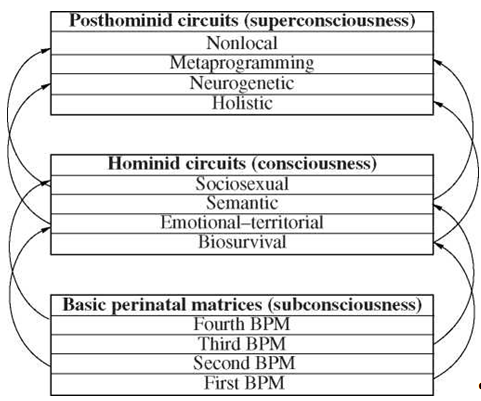
Fig. 1. Model of cross–circuit relations of the human psyche.
The first BPM implies the thoughtless and sensuous dissolution of an embryo in the being of the mother womb, which represents for it the whole surrounding world. Here, problems related to the chemical poisoning of the fetus may arise if, for example, its mother smokes, drinks, or does not observe a strict diet. As a result, painful feelings occur, enriching the embryo’s forming subconsciousness. The first hominid circuit is also related to the sensuous integration of a baby into the new surrounding world, entailing the emergence of the feeling of security and comfort. At this stage, problems also arise related to, for example, no support from the mother when something scares a child. The result of such childish stresses in future adult life is, if not fear, at least a permanent feeling of suspicion. The fifth (holistic) circuit again represents the sensuous exploration of the surrounding social space and is aimed toward consuming its inherent pleasures. Problems arising here are, as a rule, related to excessive pleasures, which may negatively affect human health.
Thus, all the first levels are characterized by the sensuous cognition of the world. Only the qualitative component of this process changes.
At the second BPM stage, humans form the skills of resistivity to the outside world. If the pressure of the uterine walls on the fetus is too strong, it experiences perinatal stress, and its resistivity to external circumstances decreases. We may say that excessive trials “break” inborn human immune reflexes. The hominid (emotional–territorial) circuit is formed under the pressure of the outside world and leads to the emergence of the human ego. It is a certain membrane between the outside and inner worlds of the human being, and the stronger the outside pressure, the stronger the membrane must be, improving the organism’s resistivity to external circumstances. The neurogenetic circuit is also related to reactions to the outside world; however, resistance at this level takes the form of wisdom. The main threat at this stage is that, if a human has not reached wisdom, there is a risk of defeating human will and losing functionality.
Thus, the second levels are characterized by the formation of mechanisms of resistivity to the outside world. The direction of the mechanisms is not subject to changes; only their qualitative component is transformed.
At the third stage, when the fetus begins its primary, primitive, and already not sensuous but empirical cognition of the world, there is a threat of physical traumas, which can later decrease human functionality. The hominid (semantic) circuit of consciousness is aimed toward the logical–empirical cognition of the world and the preservation of obtained knowledge as linguistic constructions. Dynamic processes are the centerpiece of cognition, which is reflected in the establishment of cause–effect relations and their use in practical activities. Failures along this way lead to the loss of functionality, which manifests itself in the tardiness of mental psychic reactions. The metaprogramming circuit is also aimed toward revealing the inner laws of being. Failure in mastering this circuit is fraught with psychic distortions and the origin of severe neuropsychic diseases.
Consequently, the third levels are characterized by the formation of the mechanisms of cognition of the outside world. The direction of these mechanisms undergoes no changes; only their qualitative component is transformed.
The fourth matrix predetermines the child’s acquisition of new space. This is a qualitative leap of the cognition sphere itself. Failures at this stage may lead to the loss of health by the child: entering a new world is accompanied by strong drops in intracranial pressure, the cutting of the umbilical cord, and other deflections from the usual existence. The hominid (sociosexual) circuit also presupposes that a human enters a new world, a social space. Failures in this circuit are expressed in inefficient social interactions. Finally, the nonlocal circuit represents another breakthrough in the cognition sphere, which expands to the size of the universe.
Thus, the fourth levels are characterized by the formation (expansion) of the sphere of cognition of the outside world. All these psychic levels are based on the cognition process; only its horizons become wider.
Why are the developmental stages (circuits) of subconsciousness, consciousness, and superconsciousness not distorted but reproduced in a strict succession?
The nature of cross-circuit correlations: the “liquid–drop model”
The spiral reiteration of the phases of the formation of the human psyche is based on evolutionary mechanisms. According to the theory of perinatal matrices, the human being comes into this world unconscious but already with a fundamentally filled subconsciousness, which stores various feelings, roused by different events. These subconscious images act as a priori (subconscious) psychic templates, which are subsequently “tagged” by new exposures to the outside world and reactions of the organism. This is the very basis for the formation of consciousness proper, which goes through the same evolutionary phases as subconsciousness.
Then superconsciousness begins to form from consciousness, which has undergone a certain evolution, and superconsciousness repeats the same evolutionary stages. With time, interaction between consciousness and superconsciousness becomes more energetic. The fact that consciousness sort of separates from subconsciousness, in order to detach superconsciousness later, explains, in our opinion, the organic unity of levels of the three human psychic states. Schematically, Fig. 2 represents the above relationship between subconsciousness, consciousness, and superconsciousness as a “liquid–drop model.”
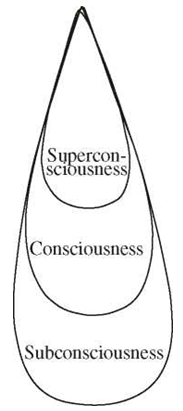
Fig. 2. The “liquid–drop” model of the human psyche.
The subconscious level forms numerous so–called automatisms. Let us call them complexes, implying certain most common psychic syndromes that program human reactions to external stimuli. [2] These complexes always limit human behavior, decreasing its rationality and functionality. Quite often complexes provoke painful reactions in humans, and these reactions can escalate into psychopathological syndromes. In order to avoid them, humans “scrub” their subconsciousness. The “processing” of subconscious complexes is carried out at the logical level of consciousness either by humans themselves or with the help of psychotherapists. The result is the same: deliverance from complexes and reduced a priori dependence of individual behavior. Consciousness participates in the “cleansing” of subconsciousness by destroying complexes and attaining more freedom.
However, the conscious level forms its own complexes. The specialists call them imprints, implying rigid behavioral directives, practically insusceptible to correction [4, 7]. Imprints also limit human functionality and hinder humans from displaying their potentialities fully. In other words, the role of imprints corresponds to the role of complexes but at another level. As a rule, imprints are fully destroyed already in the neurogenetic circuit of consciousness and human behavior starts depending not on inner imprint programs but on external circumstances. The liquidation of imprints in the hominid circuits is a certain “scrubbing” of consciousness. Here we also see a simple relationship: the development of superconsciousness with its inherent posthominid circuits leads to the “scrubbing” of consciousness in all the hominid circuits.
The participation of a higher psychic layer in the destruction of complexes from a lower psychic layer entails the recreation of the lower layer structure at all higher layers. This regularity may be expressed in the following way: “unloading” the circuits of a lower psychic layer, a higher psychic layer “copies” them at its own layer.
The risks and threats of forming psychic circuits
Each of the 12 described circuits of the human psyche harbors serious threats, because their acquisition may be either successful or unsuccessful, where various health distortions arise, from the simplest physical traumas to severe psychic diseases.
Thus, the first BPM may be accompanied by the chemical poisoning of the fetus, which may afterwards initiate nosophobia (pathological fear of falling ill), hypochondria (imaginary concerns about one’s severe ailments), cancerophobia (fear of malignant diseases), and bacillophobia (fear of microorganisms and infections).
The second BPM, which is accompanied by the fetus’ asphyxia, predetermines such relatively rare illnesses as the phobia of motherhood, zoophobia (fear of animals), and inhibited depression, as well as proneness to suicide, alcoholism, and drug addiction.
Subconscious recollections of the third stage may provoke claustrophobia (dread of being in closed spaces) and phobias related to subway trips (fear of closed dark tunnels), airplane flights, and sea cruises.
The fourth BPM, as mentioned above, is accompanied by a stress resulting from a change in the fetus’ habitat. The reflections on this event may stimulate agarophobia (dread of open spaces) and acrophobia (fear of heights).
The first (biosurvival) circuit is aimed toward making a human accustomed to a new space. The threat of failure to go through this circuit is in fixing the feeling of anxiety and forming various fears in humans, which may take the form of obesity and proneness to smoking and alcohol consumption.
The second (emotional–territorial) circuit is aimed toward the formation of the individual ego. Unsuccessful passage through this circuit leads to chronic depression and avolition. Development of a superiority complex is also possible.
The third (semantic) circuit is related to the formation of “reality tunnels,” which restrict the perception of reality. A failure to master this circuit is expressed in inarticulate and clumsy speech and primitive thinking.
The fourth (sociosexual) circuit is aimed toward human adaptation to vast social spaces. Failures in this circuit often lead to autism.
The fifth (holistic) circuit is aimed toward gaining pleasure from life. At this stage, it is easy to get carried away by something, go beyond the limits, and lapse into certain dangerous extremes: gluttony, sexual immoderation, self–indulgence, drug addiction, etc.
The sixth (collective) circuit implies the attainment of wisdom. However, here, there is a threat of disillusionment, loss of reason to live, and destruction of the motivation system. Unsuccessful passage through the neurogenetic circuit may result in chronic apathy.
The seventh (metaprogramming) circuit leads to pluralistic views on the world, which, under certain conditions, may result in schizophrenia. This circumstance possibly explains the fact that many men of genius suffered from different psychic diseases [8].
The eighth (nonlocal) circuit implies the exit of consciousness from the body. Unsuccessful experiments at this level of development are fraught with the nonreturn of consciousness to the braincase with a consequent lethal end. This is why all yogic and mystic doctrines in such cases insist on the compulsory presence of a mentor, who could protect students.
As we see, each subsequent higher circuit carries a greater threat than the previous ones. This is especially true of the posthominid circuits, where superconsciousness is developing. For example, at the level of perinatal matrices, all threats are formed in latent forms, but they manifest themselves, as a rule, in the hominid circuits, where anxieties have a material and crude nature and are subject to correction. In the posthominid circuits, practically incurable psychic diseases begin to develop, and sometimes experiments with the higher qualities of consciousness may lead to death.
Naturally, the typology of diseases according to the hierarchical structure of the human psyche is not absolute. However, the intention itself to form definite psychosomatic distortions, which correspond to a certain level of psyche, is, in our opinion, beyond doubt.
The nature of psychosomatic diseases
Many psychologists and medical doctors have come to the conclusion that the overwhelming majority of psychic and somatic ailments are provoked by mental disorders. This is proved by the fact that all attempts to find the so–called marker of schizophrenia in the form, for example, of a bad gene have failed [9, p. 47]. The mental nature of diseases is based on the concept that the human brain is a complex information system that is gradually metabolized by the human organism. A bad information system corresponds to a bad organism and vice versa. This approach is typical, in particular, of the Italian psychologist A. Meneghetti [10, p. 21].
On the basis of the information model of the brain, it is possible to assume the logical diagram of the complex and imprint formation process.
A complex in human subconsciousness has a triple structure and consists of information about a specific event; emotions related to this event; and bond energy, which keeps information and emotions (Fig. 3). When a signal occurs and carries information similar to that included in the complex core, the bond triggers off and a quite definite reaction is generated with a corresponding spectrum of emotions (as a rule, negative). Humans are unable to disregard certain signals owing to the automatic nature of emotions that are “attached” to source information. In order to get rid of such emotional and behavioral dependence, psychoanalytical methods are used to retrieve this complex from subconsciousness into the field of consciousness, process the information, and thus destroy (or inhibit) the emotions attached to it. As soon as this happens, the bond between information and emotions is broken; the energy that held them together is released; the human being experiences a fit of energy; and the source information, in a neutral form and void of emotional coloring, becomes the working material of human consciousness. The ultimate result is freedom from a priori emotions and reactions.
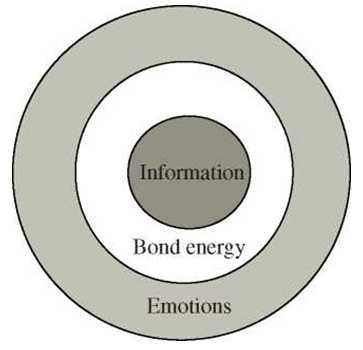
Fig. 3. The static model of complexes and imprints.
Imprint formation follows a scheme similar to that of complexes; however, the energy bond phenomenon, performed by neural circuits, is even more vivid here. Imprint destruction is also based on a three–link scheme, but the only difference is that superconsciousness takes part in the process of their destruction.
How can complexes and imprints provoke various illnesses, including somatic malfunctions in the work of the organism?
The general diagram of disease genesis may be considered with the help of the complex and imprint dynamic model (Fig. 4). A certain signal, which is, due to the established bond, transmitted to the imprint output and requires a relevant reaction, comes to the imprint input. If, for some reason, the programmed reaction is impossible, the energy that runs along the neural circuit from the input to the output of the imprint cannot be released and stays in the communication channel. During multiple reiterations of this procedure, the communication channel accumulates a large amount of excessive energy, which is fraught with malfunctions in the whole information system of the brain with relevant organic distortions. The energy–packed neural circuits may “short circuit” other neural circuits responsible for the regulation of the organism’s chemical and hormone pools. Depending on which circuits are struck, different diseases are being formed. It is the presence of complexes and imprints with their inherent rigid cause–effect relations that precondition the development of morbid syndromes.

According to Meneghetti, even phenomena such as lithiasis and neoplasia are predetermined by energy congestion in neural channels [10, p. 151]. Moreover, neoplasms have great viability owing to the energy accumulated in imprint circuits [10, p. 161]. [3]
Recovery may happen either as a result of improved human adaptability and the destruction of inhibitory imprints or as a result of changes in the environment that launched these imprints [10, p. 164].
Note the difference between conditioning and imprinting. Under conditioning, the disappearance of a stimulus leads to the disappearance of the preset reaction after some time. This is the basis for the mechanism of acquired reflex destruction. Under imprinting, the disappearance of a stimulus does not lead to the disappearance of the preset reaction. An imprint may be preserved forever. Thus, it is complexes and imprints that produce behavioral inertia, which generates energy congestion in neural circuits. In addition, the accumulation of “energy clots” in brain circuits does not imply that it automatically results in diseases, primarily of the brain itself. Since different brain sections are responsible for the regulation of the relevant functions of the organism, morbidity may spread over the brain itself, as well as over peripheral organs.
Note that any one imprint is rarely able to lead to a fatal health breakdown; as a rule, imprints must be sufficiently numerous. At the same time, the action of auxiliary imprints is maintained by some important functional qualities of the brain, in particular, by the neuroplasticity and continuity of work.
The first quality is the brain’s ability to change physiologically as a result of a certain type of human activity. For instance, it is known that professional musicians have relevant brain sections increased: many hours of playing the violin change the number of cells that take part in musical performance and increase their conductivity [11, p. 506]. Or, during a study of London taxi drivers, it was found that brain sections that are responsible for route selection increase after the first six months of street driving [11, p. 507]. Thus, certain behavior adapts the brain and its abilities. In addition, the brain may progress, as well as regress. Negative auxiliary imprints that lead to a drop in the intensity of information exchange between humans and the environment stimulate brain regress, accompanied by irreversible physiological changes.
The second quality is the brain’s capacity, under sensory deprivation (i.e., the absence of any signals from the outside world), to generate its own images. Experiments show that a human locked in a dark room, where neither sound nor light signals can reach, begins to hallucinate [12, p. 53]. The brain needs constant information stimulation; if it stops, the brain substitutes it with its own images. If auxiliary imprints of humans restrict their social contacts and information exchange, the brain may start filling in for the lack of information by generating hallucinatory images.
The interiorization of psychic circuits
How does the transfer from a lower to a higher circuit occur? The answer to this question is in the general mechanism of personality evolution [13].
The transfer to a higher circuit occurs only when lower circuits have been interiorized, i.e., after their cognition with all their inherent relations and bonds. We may say that the corresponding circuit as a characteristic system of relations and interactions is included into the inner world of a personality as an ideal model, devoid of all insignificant relations and parameters. However, this is the ideal. In reality, the transfer to a higher circuit may occur when the interiorization of the previous circuits was either incomplete or unsuccessful, which, as a rule, is accompanied by the development of various illnesses. We may even say with a certain degree of conventionality that diseases are nothing but the unsuccessful interiorization of the previous psychic circuits.
This can be illustrated by the fourth (sociosexual) hominid circuit. Thus, if humans have not acquired confidence and tranquility in the first circuit, a powerful and stimulating ego in the second circuit, and a quick mind and good communication skills in the third circuit, then it would be very difficult for them to find their own place in the fourth circuit, and their functionality will be low. Resolving constantly arising problems will be blocked by bad “preparation” in the lower circuits, and this will finally lead to the formation of negative auxiliary imprints, which may, under unfavorable circumstances, provoke various diseases.
The information given above allows us to make another important conclusion: imprints originate as a result of the unsuccessful interiorization of the previous psychic circuits. If we take into account cross–circuit relations, we may state that the main source of the inefficient mastering of a psychic circuit is the unsuccessful interiorization of the relevant cross–circuit. This, in fact, means that premature evolution is even worse than no evolution at all.
* * *
We have considered the analogies of human psychic circuits that are largely preliminary. Nevertheless, we already have purely physiological proofs of the rational algorithm described. In particular, it is generally accepted that there is such a brain controlling mechanism as an error detector [14]. Its qualities strongly recall the work of the consciousness imprinting and reimprinting pattern.
The circuit theory sides with the theory of vital resources, according to which each human has four basic resources: money, energy, knowledge, and time [15]. It turns out that these resources correspond very accurately to the four hominid circuits of consciousness, namely: in the first (biosurvival) circuit, the main limitation is the financial resource; in the second (emotional–territorial), energy; in the third (semantic), knowledge; and in the fourth (sociosexual), time. Indeed, the human struggle for the financial resource means the simplest survival (the first circuit), while defending oneself in social groups and supporting one’s ego (the second circuit) require primarily the total vital energy. Active work in the semantic circuit in specific professions and activities is based on knowledge, and the construction of and support for complex social relations (the fourth circuit) primarily requires time. Thus, depending on the extent of deficiency of each vital resource, we may indirectly determine in which psychic circuit an individual stays. It is not improbable that, in the nearest future, we will obtain new criteria of differentiating psychic circuits, which will allow us to transfer theoretical constructs to the stage of tests and applied analysis.
References
1. S. Grof, The Transpersonal Vision: The Healing Potential of Nonordinary States of Consciousness (Sounds True, Louisville, Col., 1998).
2. L.D. Stolyarenko, Bases of Psychology. Educational Aid, 12 ed. (Feniks, Rostov–on–Don, 2005) [in Russian].
3. T. Leary, “The Seven Tongues of God,” Psychedelic Review, No. 3 (1964).
4. R.A. Wilson, Evolutionary Psychology (MIT Press, Cambridge, 1992).
5. R.A. Wilson, Quantum Psychology (New Falcon, Tempe, Ariz., 1990).
6. The Human Being: The Anatomy, Physiology, Psychology: Encyclopedical Illustrated Dictionary, Ed. by A. S. Batuev, E. P. Il’in, and L. V. Sokolova (Piter, St. Petersburg, 2001) [in Russian].
7. E.V.Balatskii, “Auxiliary Imprints and Human Behavior,” Vestn. Ross. Akad. Nauk, No. 10 (2007) [Herald Russ. Acad. Sci. 77 (5) (2007)].
8. P.Kotov, “What Diseases Geniuses Have,” Vse Yasno, No. 5(63) (2006).
9. C.Frith and E.Johnstone Schizophrenia: A Very Short Introduction (Oxford Univ. Press, Oxford, 2003).
10. A.Meneghetti, The Monitor of Deflection in the Human Psyche (Psicologica, Rome, 2004).
11. D.Goleman, Destructive Emotions (Bantam, New York, 2003).
12. T.Leary, M.Stewart, et al., Technologies of Change in Consciousness in Destructive Cults (Ekslibris, St. Petersburg, 2002).
13. Third Instinct (http://instinst3.narod.ru).
14. N.P. Bekhtereva, The Brain’s Magic and Life Labyrinths (AST, Moscow; Sova, St. Petersburg, 2007) [in Russian].
15. E.V. Balatskii, “Theory of Life Resources: Models and Empirical Estimates,” Monitoring Obshch. Mneniya, No. 2 (2007).
[1] We can see the ideas of cross–circuit correlations already in Wilson’s works. For example, she states that the fifth circuit is fastened to the dextrocerebral cortex and neurologically linked to the limbic system (first circuit) [4, p. 191]. Wilson has another passage where he states that a genius is one who has been able to get to the seventh circuit and come back to the third [4, p. 100]. However, he did not develop this thought to an end.
[2] Our understanding of complexes as elementary unconscious behavioral intentions differs from the generally accepted one [6, p. 1126].
[3] Meneghetti thinks that cancer diseases strike inadaptable, peremptory, and stubborn people [10, p. 165].
Official link to the article:
Balatskii E.V. Cross–Circuit Relations in the Human Psyche// «Herald of the Russian Academy of Sciences», 2007, Vol. 77, No. 6, pp. 592–597.

